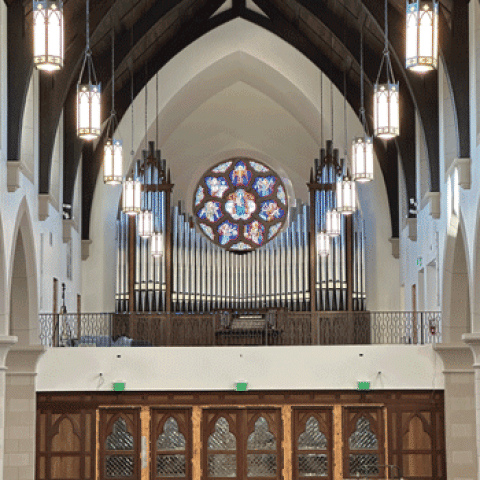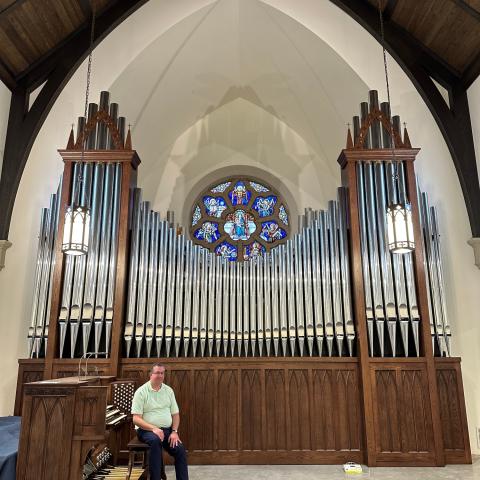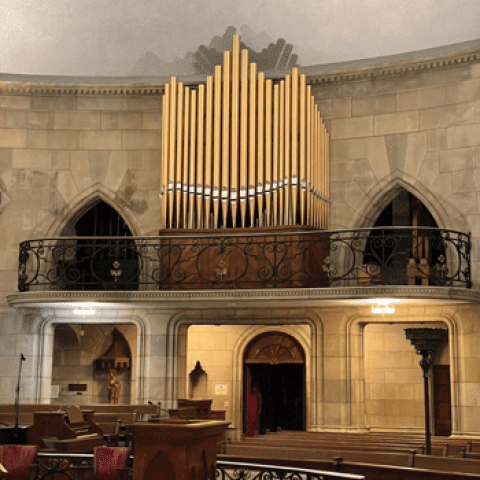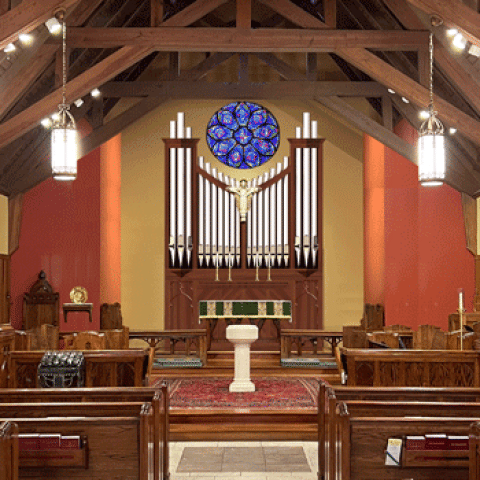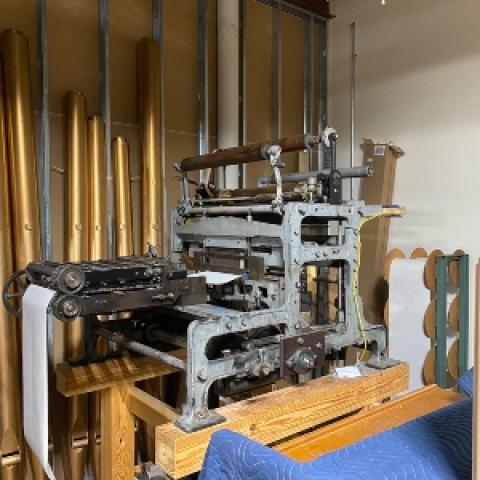Kegg Pipe Organ Builders, Hartville, Ohio, has built a new organ for Christ the King Chapel, Christendom College, Front Royal, Virginia. The organ comprises 47 ranks, 41 stops, and 2,825 pipes across four manuals and pedal. The video features organist David Catabui.
The new neo-Gothic Christ the King Chapel of Christendom College in Front Royal, Virginia, can be seen from the western end of Interstate 66, a few miles east of where it meets Interstate 81 in western Virginia. Designed by the firm of O’Brien & Keane of Arlington, Virginia, the traditional cruciform building seats approximately 750 with extended transepts and Lady Chapel in the apse. The floor contains complex wood patterns in oak and walnut and includes marble roundels of the Four Wounds of Christ. There are eight side chapels in the transepts.
Acoustical consultant was Scott R. Riedel & Associates of Milwaukee.
Installed in February of 2023 in less than three weeks by the Kegg crew, the tonal finishing was completed by Charles Kegg and Chris Soer in time for the opening of this new facility in April.
The new Kegg organ is featured on the cover of the April issue of The Diapason: www.TheDiapason.com
For information: www.keggorgan.com

